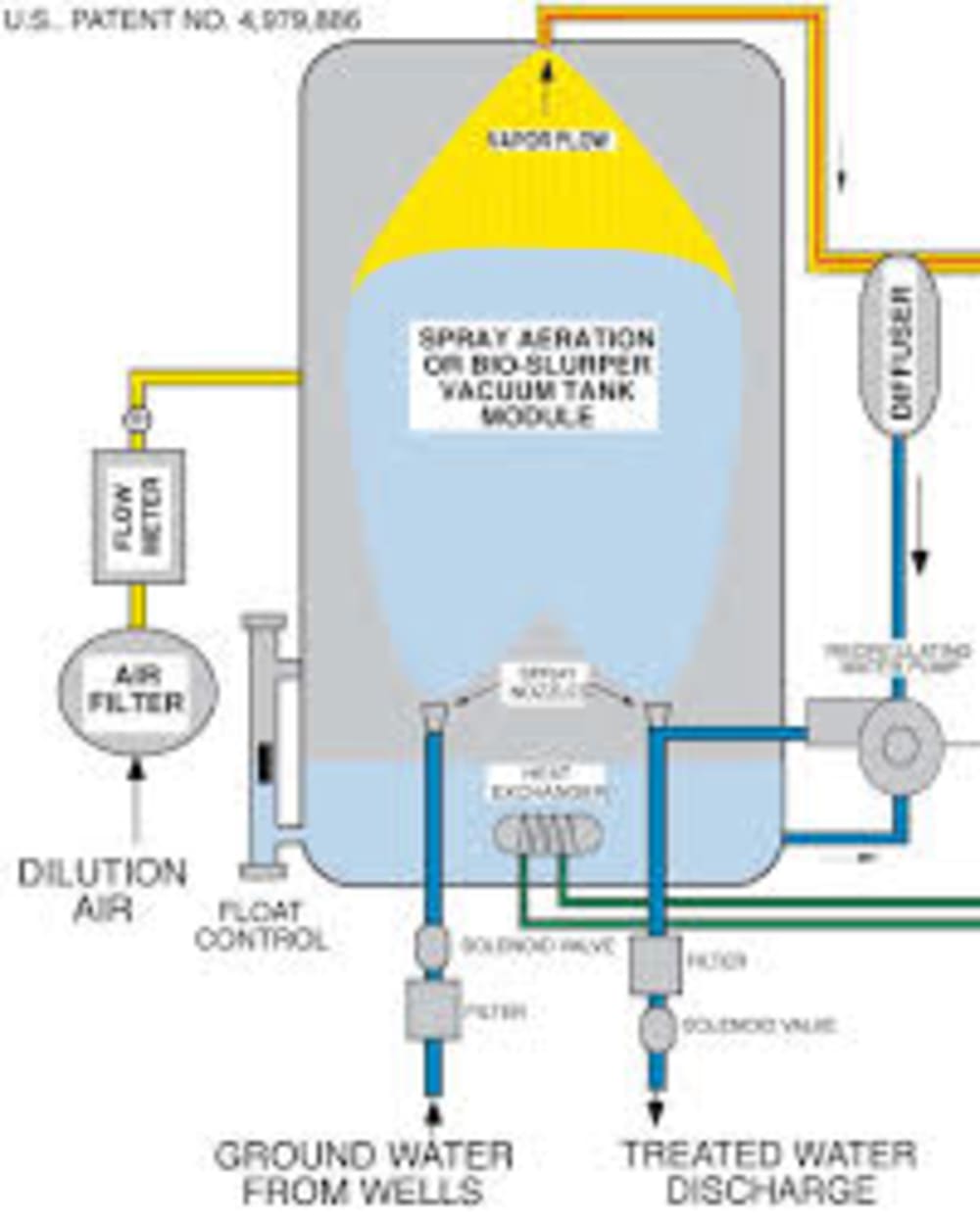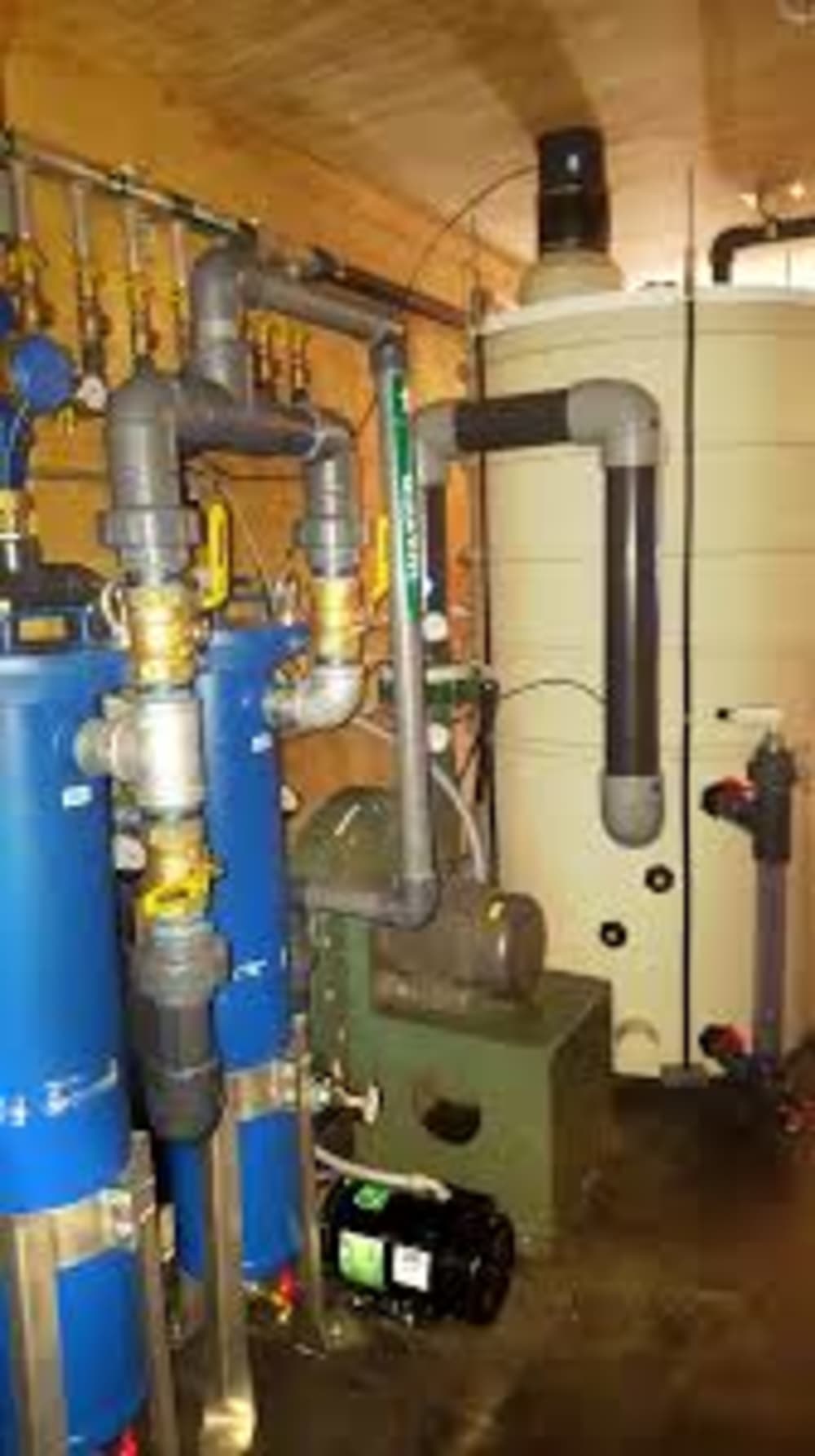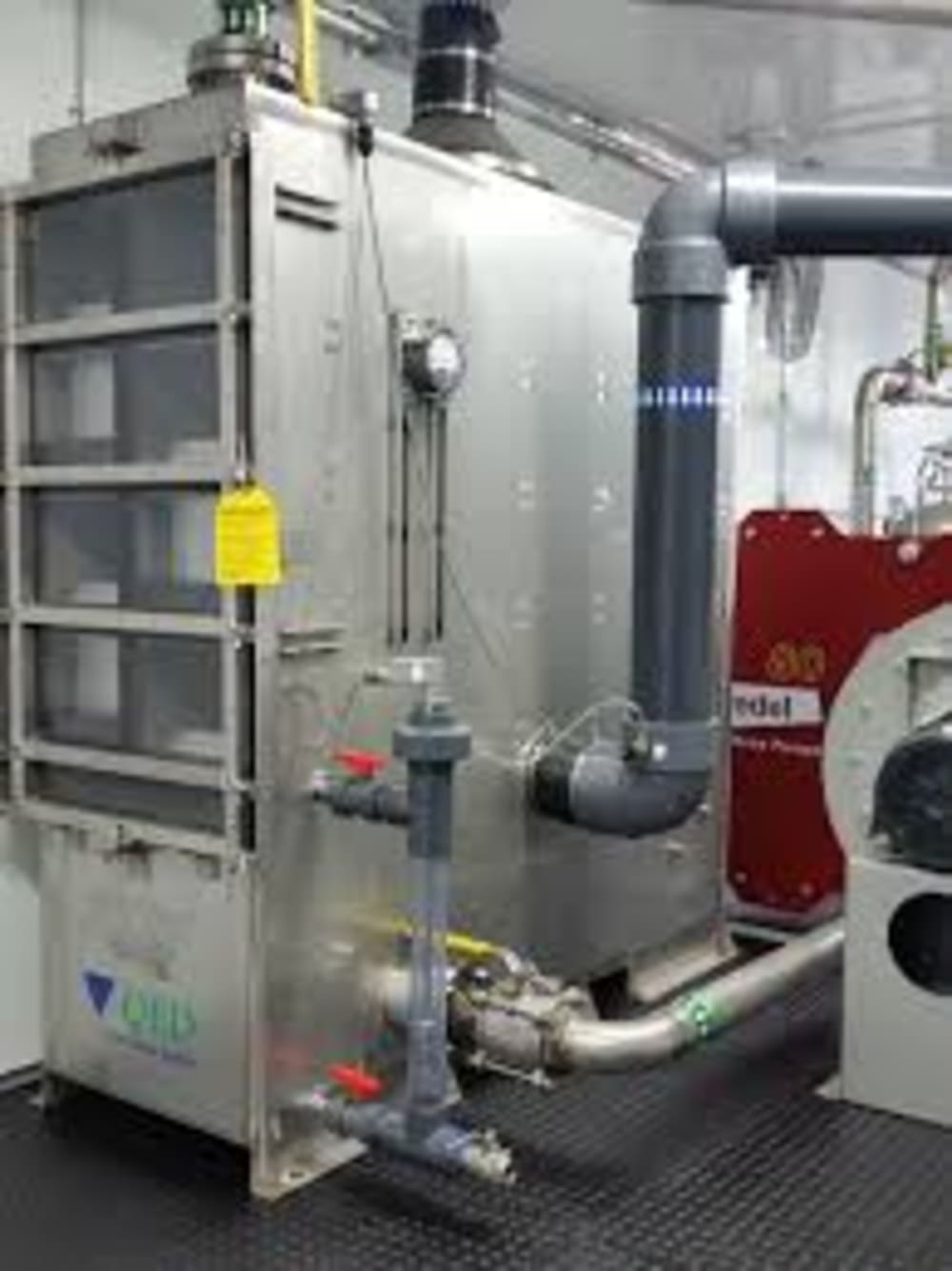Air strippers are used for the removal of volatile organic compounds (VOC), gasoline range organics (GRO) and chlorinated organic compounds from water. The process involves high air to water contact by forcing air through contaminated process water, groundwater or surface water which allows the volatile contaminants to strip out of the liquid stream. The air stream from this process is then treated with vapor phase carbon vessels, an oxidizer or allowed to discharge into the atmosphere if below discharge regulations.
Air Strippers are optimal for processing large quantities of water impacted by VOCs. Compared to our diffused and stacked tray air strippers, the tower air stripper has the highest process capacity. The aerator column is filled with polypropylene packing media, designed for either random packing or structured packing. The packing provides a large air/water contact area to strip volatile compounds from water. Vapors are discharged through the top of the tower to atmosphere or plumbed to an oxidizer or vapor phase carbon vessels for further treatment. Treated water is collected at the base of the tank for gravity drain or pump out. Packed tower air strippers provide efficient use of air with a lower air/water ratio and lower pressure drop with a large treatment cross section in the tower. Portable towers, with a mobile steel skid base are available.
Applications/uses
- Low cost desalinization
- Brine water filtration
- Packed tower humidifier/evaporator
- Benzene removal
- VOC removal
- BTEX removal (Gasoline, Benzene, Toluene, Ethylbenzene, Xylene)
- Chlorinated organic removal (TCE, PCE, TCA, DCE, Vinyl Chloride)
- GRO removal
- Trihalomethane (THM) removal (bromoform, chloroform, fluoroform, et al)
- Hydrogen Sulfide removal (H2S removal)
- Chlorinated compound removal
- Wastewater treatment
- Groundwater remediation
- De-gasification (CO2 removal)
Features and Benefits
One of the ways to remove volatile organic compounds (VOCs) from wastewater is to use a pack tower air stripper. The pack tower is a counter-current design where the wastewater is injected at the top of the tower and the air is introduced at the bottom. In the middle of the tower, the packing material agitates the water and strips the contaminants. The contaminants are then released either to the atmosphere or to post treatment per your local regulations.
Some common VOCs removed include:
- Tetrachloroethylene (PCE)
- Dichloroacetic acid (DCA)
- Vinyl chloride (C2H3Cl)
- Trichloroethene (TCE)
- BTEX compounds (Benzene, Toluene, Ethylbenzene and Xylene)
- MtBE (Methyl tert-butyl ether)
- Hydrogen sulfide (H2S)
- Carbon dioxide (CO2)
- Ammonia or Azane (NH3)
Each system is designed to maximize the surface area for the most effective mass transfer to suit your application. They can accommodate liquid flow rates from 5GPM to 7500GPM per vessel and range from 12 inches in diameter to 14 feet.
Base Air Stripper includes internals and blower
ADVANTAGES
- Can handle higher flow rates.
- Can strip contaminants with low volatility more effectively due to the higher air-water ratio.
- More efficient at treating highly contaminated water
APPLICATIONS
- Desalination
- Brackish water
- Reverse Osmosis
- Groundwater
- Landfill Leachate
- Industrial Process Water
Like this entry?
-
About the Entrant
- Name:Simon Shaibu
- Type of entry:teamTeam members:Shaibu Simon, Nathan El-nathan and La'azorang Hannaniya.
- Software used for this entry:Microsoft word and Corel draw
- Patent status:none








